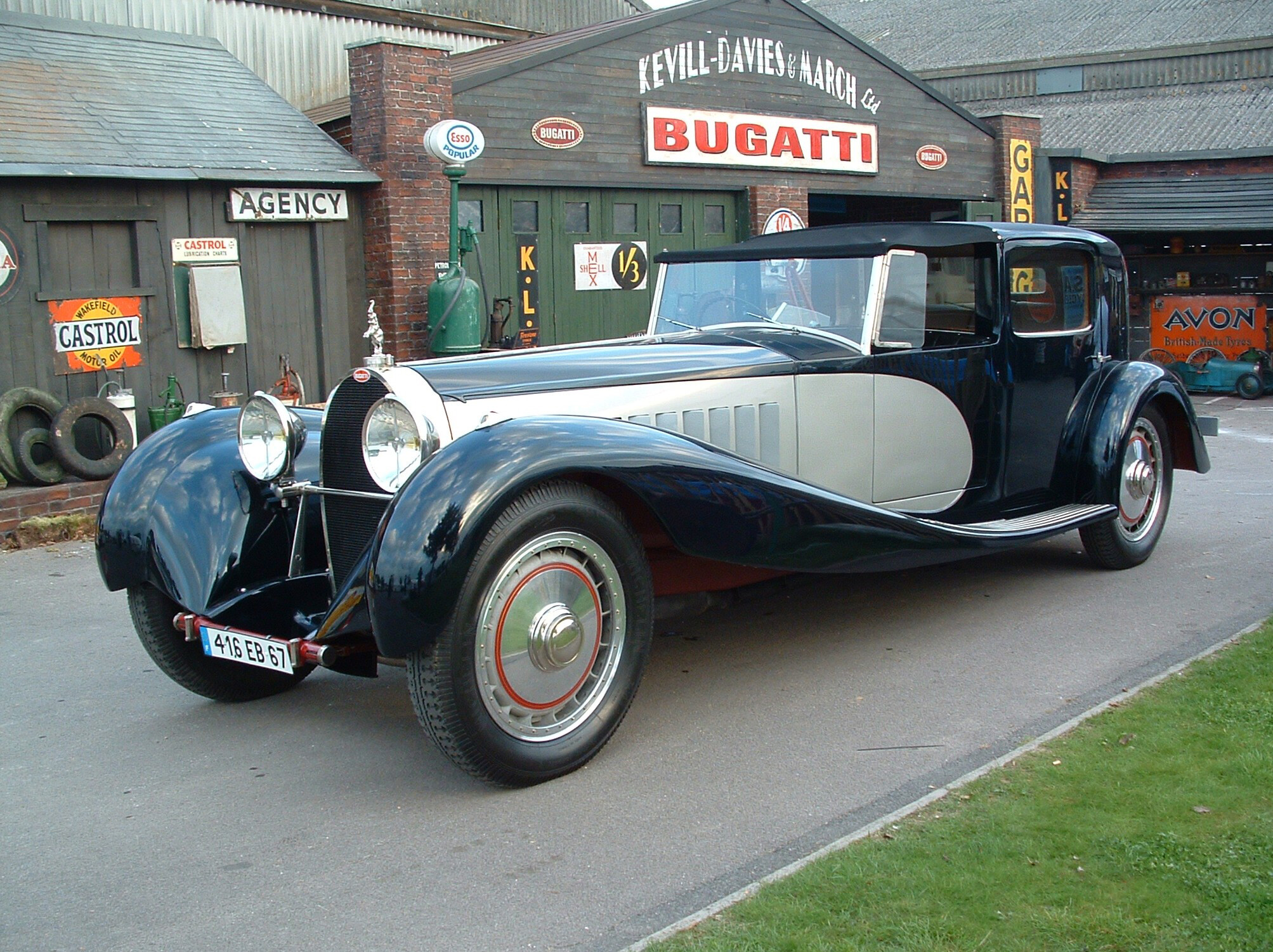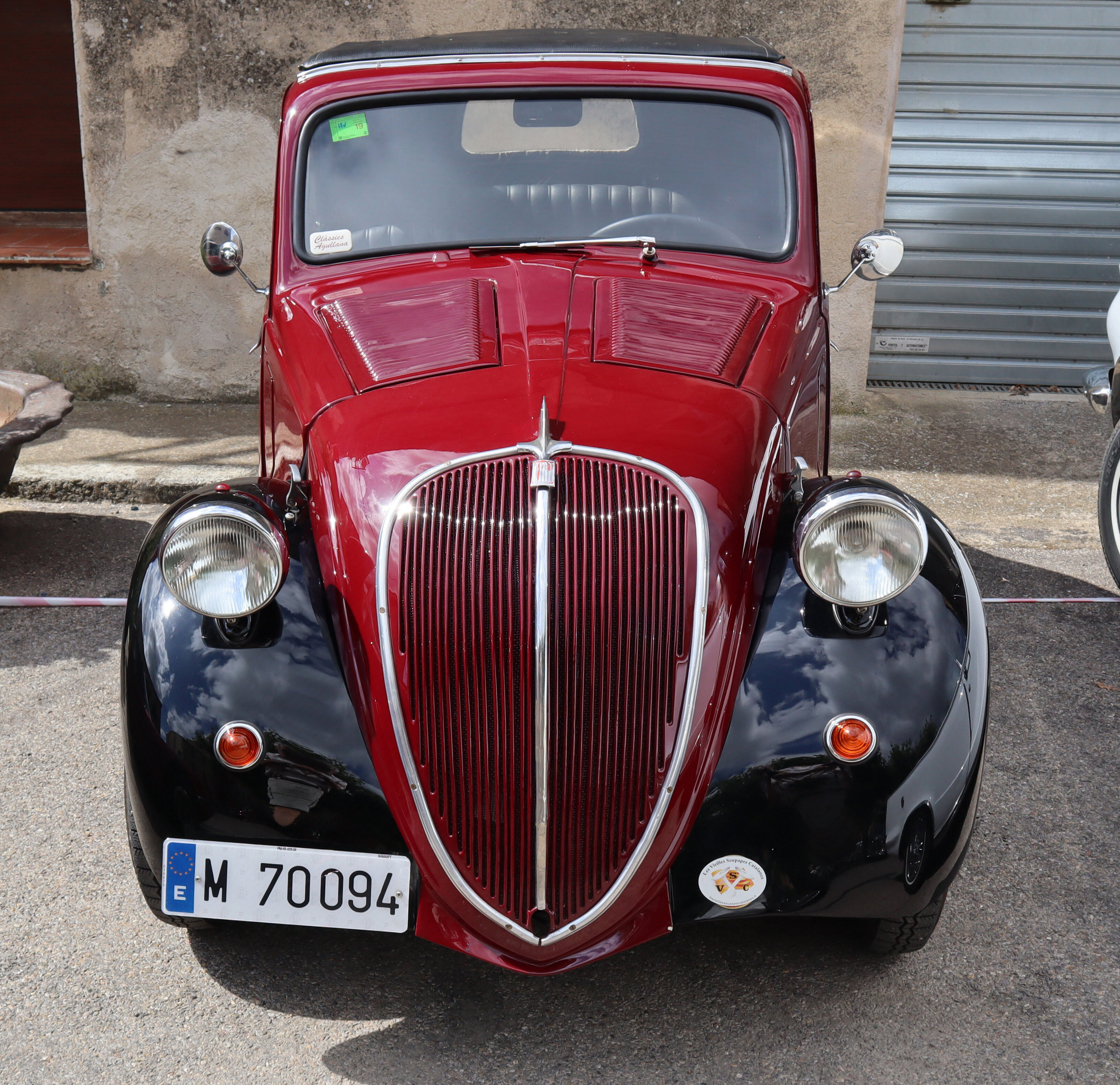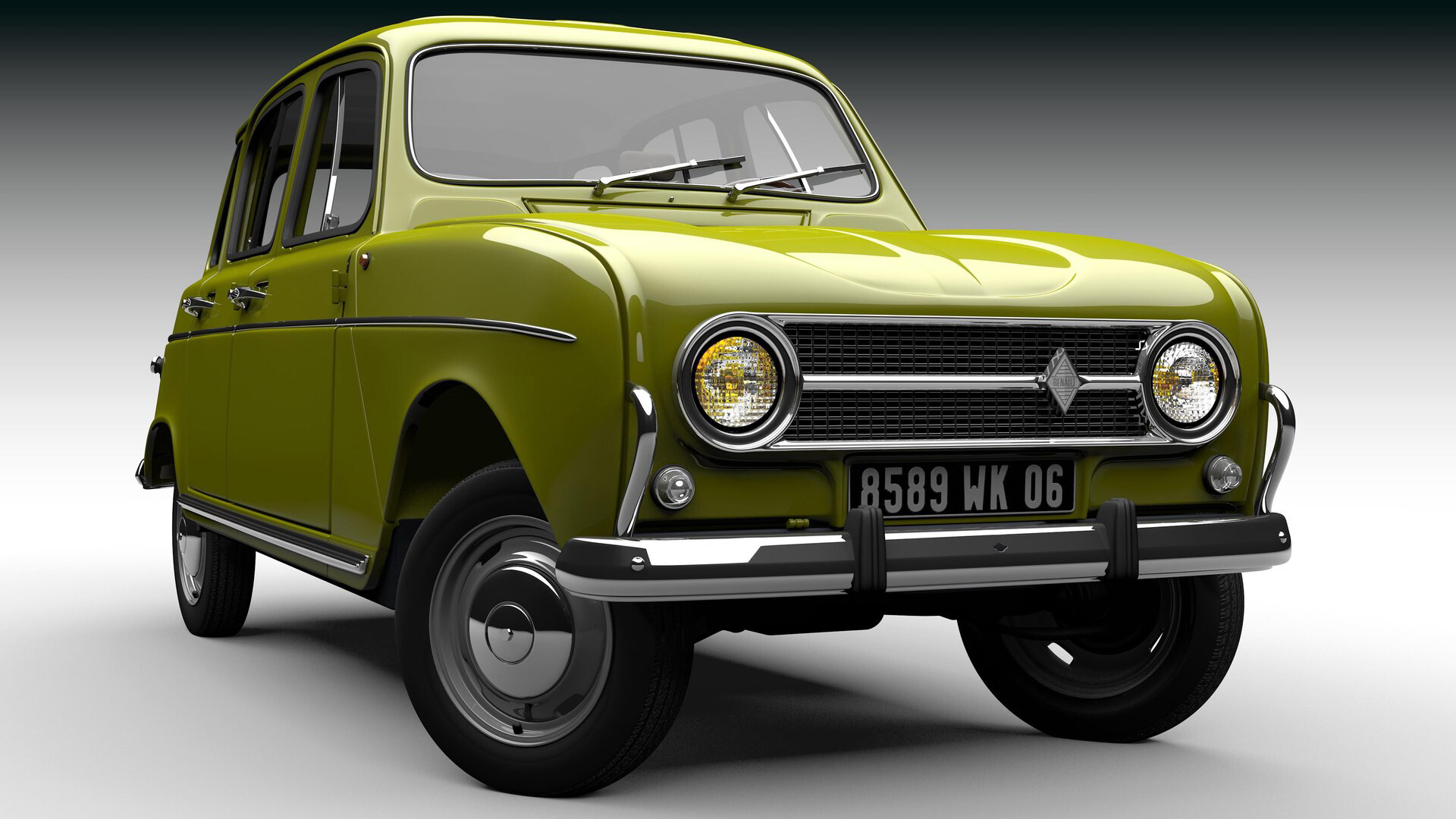Cars in color
When Henry Ford launched the Model T in 1908, he accompanied it with the slogan that you could order it in any color as long as it was black. Aesthetic choice gave way to economic choice and the demands of the revolutionary assembly line, which cut costs by drastically reducing construction time, with the toll being the obsessively repetitive gestures rendered iconic by Charlie Chaplin in the 1936 film Modern Times. So, cars painted black, to break the class taboo and open the door to mass motorization in monochrome anonymity.
Italy would have to wait for the post-World War II economic boom, when a thousand lira a month was not worth nearly as much as it used to be, mix-engine Vespas and Lambrettas puttered along the roads, and people were had to content themselves with seeing cars whizzing by, admiring their shapes and craning their necks to see the ones with custom colors that identified their owners.
The rule was for black or blackish cars, with few exceptions.
The rule was for black or blackish cars, with few exceptions. The real colors belonged to the luxury cars, which could only be imagined, the stuff of dreams, the preserve of nobles, millionaires, the people who counted and commanded.

Bugattis, Rolls Royces, Isotta Fraschins, Alfa Romeos, Mercedes, Lancias, and even Fiats–entrusted to not-yet-starchitect coachbuilders and sheet metal workers who customized their shape–sported aristocratic and sophisticated dark and light blues, flamboyant reds, elegant greens, dazzling whites, shocking yellows, even with very carefully studied two-tone solutions between the glimmering chrome and streamlines and meticulous brush-applied finishes.
Colors were a serious matter, far beyond choices of style and taste, so much so that, between the 1920s and 1930s, the International Federation codified the colors of the countries traditionally engaged in motorsport competition, identifying them by a shade from their national flags: Italy had vibrant and aggressive racing red; France a grandiose bleu; England was assigned a lordly green; the United States a Yankee white and blue; and Germany Prussian white, destined to become and remain silver after German mechanics were unable to reduce the weight of a race car by two pounds–to comply with regulations–and, with no other pieces left to remove, scratched off the paint. Mercedes and Auto Union earned the title of “silver arrows” on the track: the first metallic shade was simply bare metal. Instead, Tazio Nuvolari became the "red devil" in the Alfa P3 that went on to humiliate the Germans at home at the Nürburgring in 1935. The era of sponsorship swept away much of the national color tradition, with the exception of Ferrari (from one red to another) and Mercedes (for which silver remained a must).
Fiat had given a pretentious twist to the first microcar, the Topolino–which was never actually called that to avoid rights issues with Disney–by launching the 500 in elegant black and maroon, which would later become the subject of a song by [TN: singer-songwriter] Paolo Conte with a Proustian madeleine flavor. In the postwar period, black was the hard core of an aesthetic taste that required some further refining and was just waiting for the right opportunity. The cars of the 1950s and 1960s were black, gray, white, timidly pale blue, yellow and green, and did not reflect the wave of sparkling optimism that pervaded Italian society during the reconstruction, with its vibrancy and joie de vivre.

Dashboards limited to the essentials were strictly Italian; fashions arrived from the unreachable United States in diluted form, such as wood inserts on the Giardinetta (the ante litteram station wagons), two-tone colors, in the style of ‘I wish I could but I can’t’ on a smaller scale: American cars were twice the size and at least four times the power, and came in all sorts of colors. Meanwhile, radiator noses were being transformed into mouths blowing out hot air, and factories began to dare more with patterns and color schemes, but without going overboard
Again Fiat, the most popular brand, ventured a fairly shameless copy of the Corvair with the 1300-1500 and even produced it in an unpresidential blue with red interior for contrast, with synthetic upholstery that was cold in winter and scorching in summer
Again Fiat, the most popular brand, ventured a fairly shameless copy of the Corvair with the 1300-1500 and even produced it in an unpresidential blue with red interior for contrast, with synthetic upholstery that was cold in winter and scorching in summer. The color palette was finally expanded in the early 1970s: again, it was Fiat that colored the revolutionary 127 in forest green, pale green, orange, cobalt, and yellow, sparing it the dated bottle gray of the indestructible 124, which was shelved for some forty years and today enjoys new vintage splendor in light and dark pastels.
With the 2CV and the Dyane, Citroën used every youthful color going, even in the thin and economical upholstery, as did Renault with the competing R4 and later with the R5.
Alfa Romeo went wild with the Alfasud, but produced impractical and incomprehensible browns, violets, pale greens and even a faded pink (fortunately banned soon after, apparently forever) on bodies that tended toward rust tones just by looking at them, leaving Alfa fans to console themselves with just the characteristic roar of the boxer engine. Lancia, a symbol of increasingly tarnished luxury, dared even with the metallic blue Appia, and even approved the faded green Fulvia and the metallic brown Fulvietta.
No one shielded their eyes any more against the bright red that looked like something from the fire department, dark and muted gray disappeared and later reappeared with the optional paid novelty of metallic, which drove the body shops crazy in case of touch-ups, because it was prior to the era of computer mixing and the shade never came out the same as before, with the result that single-color cars became disharmoniously two-tone with dystonic variations. The boxy Fiat 130, the flagship that came late (the last made at the Lingotto site) and torn apart by the oil shock, was produced in self-important and pretentious metallic shades.
Lancia, a symbol of increasingly tarnished luxury, dared even with the metallic blue Appia, and even approved the faded green Fulvia and the metallic brown Fulvietta
Meanwhile, the two-tone trend, which had united the fashionable little Mini and the haughty Citroën DS–both with roofs in a different color from the body–was rejected. The French car designed by Flaminio Bertoni lifted itself off the ground with the hydropneumatic suspension and seemed to be doing you a favor by starting up and letting you into the velvet living-room-like cabin; the British hippy car dared ostentatiously with its little wheels on the four corners, all panache and transgression. Taboos fell and prices rose, the range of versions and fittings grew, and there was a dramatic decrease in the possibility of opting out of paying more for extras, which you now had to include in the package. It seemed like a long time ago that models came in either ‘N,’ normal, or ‘L,’ luxury. Even the New 500 claimed to be upscale with its cartoonish bar bumpers and transgressive orange-red and ocher-yellow hues.

All limits were swept aside by the boom of the Autobianchi Y10, the luxury small car that, popular among the popular crowd, offered a kaleidoscope of custom colors, even in unheard-of shades, shrugging off the embarrassing brown of the first-series Panda that had overtaken the NSU Prinz on the bend when it came to jokes about good luck (and in fact would disappear forever from the Fiat palette, with no regrets). This free-for-all unleashed stylists and factories, with daring pairings and colors, shades, combinations and para-original blends, which served to stand out in the chaos of traffic and supermarket parking lots that ousted local stores by offering, as it happens, the easy parking that was beginning to be in short supply in the city, between one brand and another because designers were quick to get on board with finishes and interiors. Imperceptibly, in the color orgy, it was precisely the classic colors that had paradoxically disappeared; the ones that everyone understands without having to pull out a painter or upholsterer’s catalog to figure it out, or an English dictionary. Cars were no longer white, red, blue, yellow, green: too simple and too commonplace. The adjective was tacked on nicely for the sole purpose of distinguishing itself from the competition, whilst, logically, red remains just red instead of ‘dark orange sunset in Fiji’ or ‘eruption of Vesuvius’.
The industry has succeeded in the feat of turning normal color into optional extras, as if the car body could come off the assembly line naked, with standard mono-paint that you either take or change for a fee
This bewildering system became what is now the norm, with the triumph of the special custom color and metallic finish to be charged separately, versus the pastel finish that also became an eye wateringly expensive extra. The industry has succeeded in the feat of turning normal color into optional extras, as if the car body could come off the assembly line naked, with standard mono-paint that you either take or change for a fee. If you didn't want the Toyota Yaris in sun-matted sugar paper white, or the Fiat 500 L in watered-down cappuccino, nothing could be easier than adding a costly item to the optional extras. The very normal white, red, green, blues black, and gray become today’s banchisa or mother-of-pearl, elixir, olivine, vertigo, pearl, artense, or platinum; or opalite light or polar white, patagonia red, alpi (standard), graphite magno and selenite gray, solanite blue, and black without frills; or even Uranus gray (no extra charge), unlike the pastel finishes of moonstone gray and pure white, and the metallic and pearlescent finishes (all of which for a fee), which include atlantic blue, deep black, dolphin gray, kings red, lapiz blue, lime yellow, reflex silver, and oryx white; finally, the vast array also includes colors that can be chosen at no extra cost, because they feature on price lists of over EUR 60.000: essence black, blue mineral or gravity, platinum graphite, snow white pearl or clear, aurora black pearl, silky silver, runa red and steel gray.
The automotive brands in the Italian market number just under a hundred; the colors number around a thousand. Henry Ford, the prophet of always black, whatever the circumstances, would have gone mad in this kaleidoscope: he, who would stop in admiration before Titian red and Veronese green (and would even doff his hat to a red Alfa Romeo), never dared to propose them to the American public, notoriously loud-mouthed and with aesthetic tastes that would have put Lord Brummel to shame.
Read
16 settembre 2022
North star Alfa Romeo, the latest model has been out of production since the end of 2020. The Tonale SUV has arrived in its place, but - we can bet - it will come back again
10 giugno 2022
New World, same history. The evolution of a race car, it is the most technological Alfa ever. 'Alfisti' are eager to try it soon